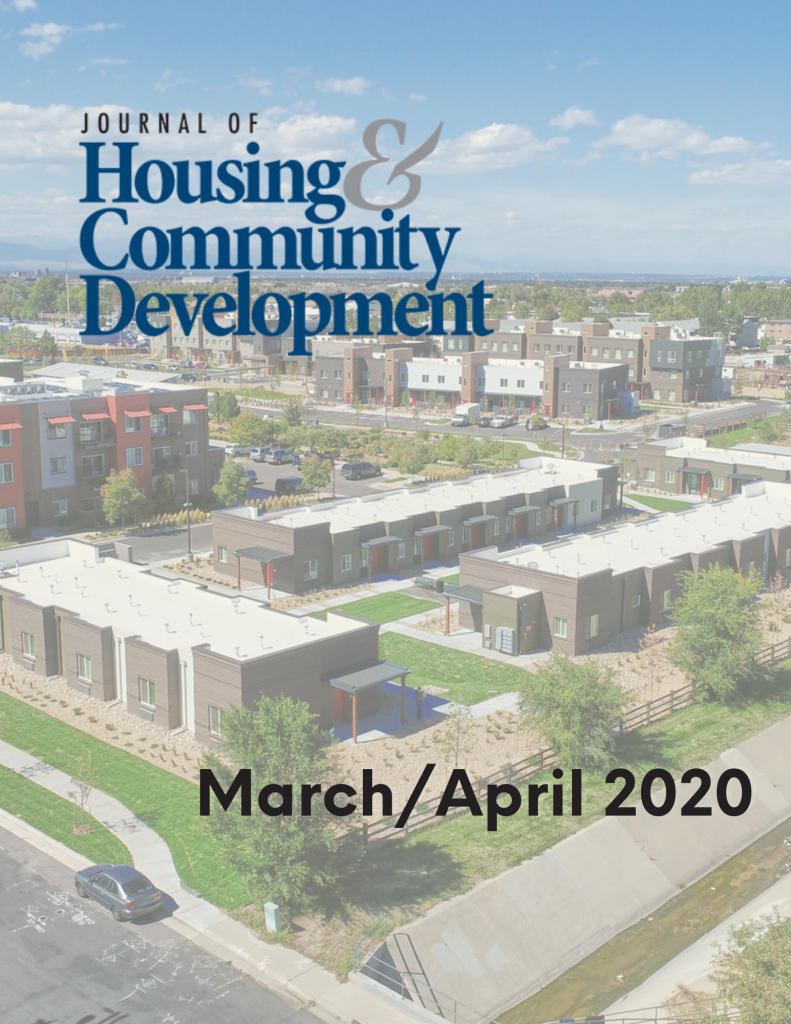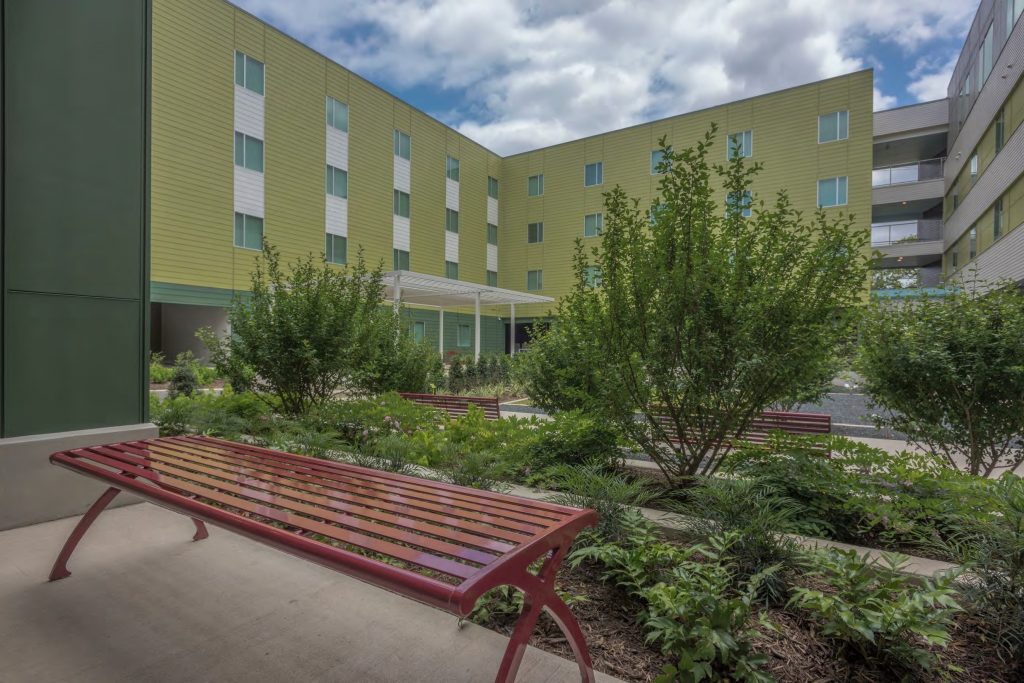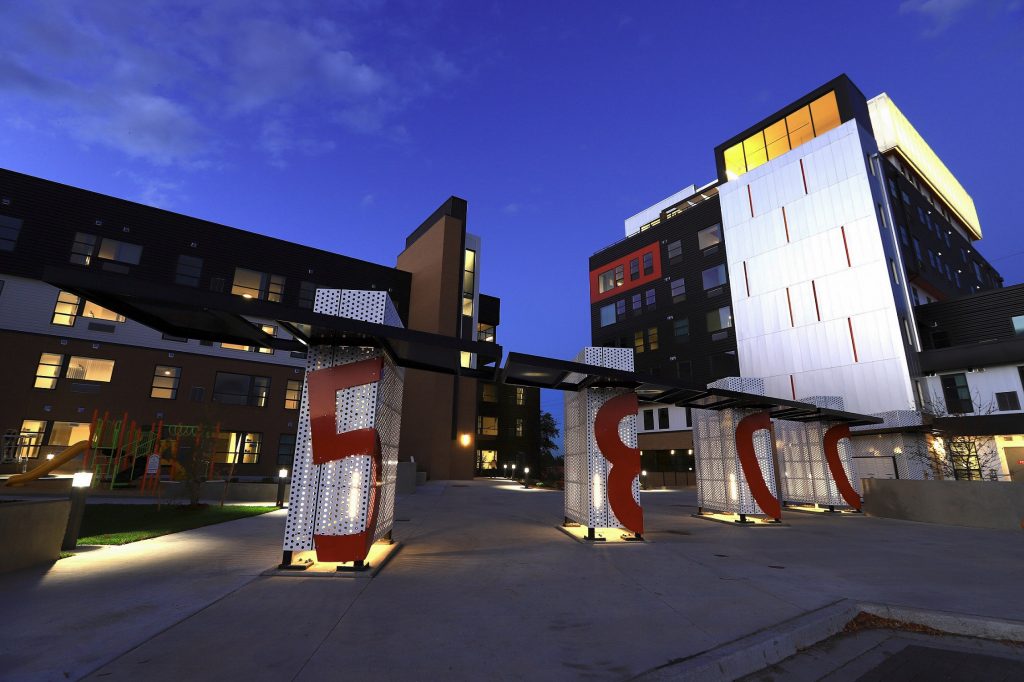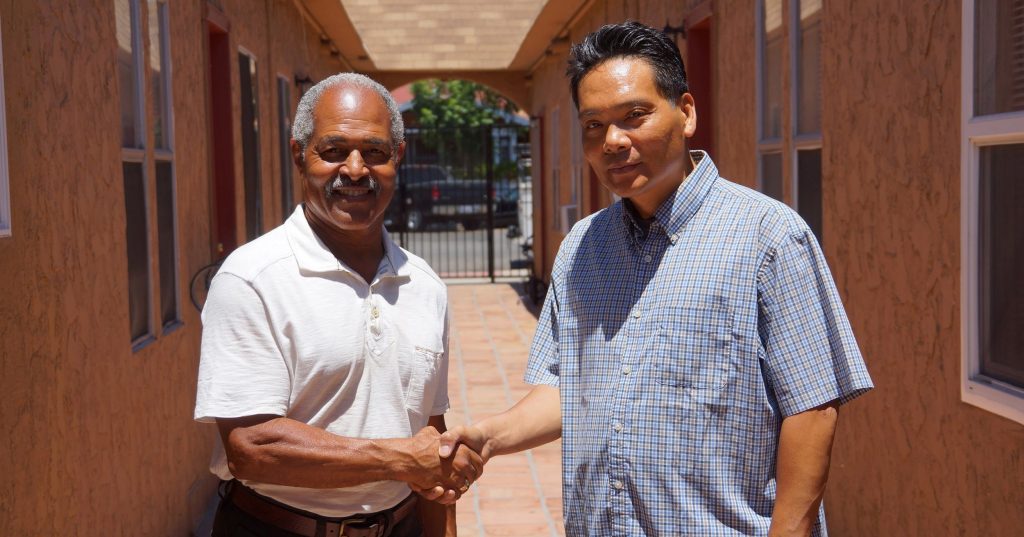Creating an Intergenerational, Affordable Town Center
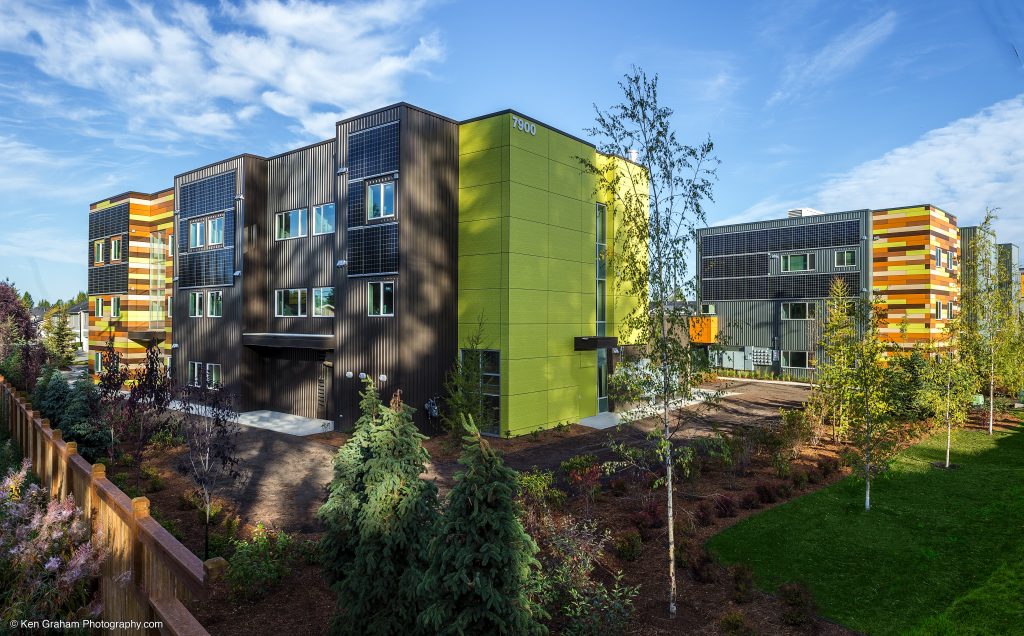
The Cook Inlet Housing Authority (CIHA) wins a 2019 Award of Excellence in Affordable Housing for Alaska Senior Village 56, a mixed-use and mixed-income development that brings affordable, independent living opportunities to east Anchorage. Nominated from among the NAHRO Award of Merit winners each year, the Awards of Excellence winners are chosen by national juries and honored at the annual National Conference and Exhibition in October. They represent the very best in innovative programs in assisted housing and community development.
Cook Inlet Housing Authority (CIHA) took a vacant, environmentally contaminated former mobile trailer home park and transformed it into a thriving mixed-use, mixed-income planned development that offers residents the opportunity to live, shop, work, and play in their neighborhood. Alaska Village Senior 56 (AVS56), which is part of the CIHA’s Creekside Town Center, is a mixed-tenancy development, comprised of three buildings: Woven House, 38 independent senior apartments located in two sister buildings; and Creekview Plaza II, a mixed-use, mixed-income building with 18 one-bedroom apartments with street-level retail space. Creekside Town Center includes three other developments: Grass Creek Village, Creekside Plaza 49 and Grass Creek North.
CIHA has been developing the Creekside Town Center since 2000 through a partnership with a private commercial development team, MCI, who initially purchased the 68-acre site. CIHA purchased 33.5 acres from MCI to advance the housing component of the town center development. They first developed Grass Creek Village, an 80-unit affordable family housing development and then Creekview Plaza 49, the first senior housing development before AVS56 was built. CIHA owns and operates Woven House and Creekview Plaza II.
The Creekside Town Center site was previously the home of a mobile trailer home park. When oil money started pouring into the area in the mid-1970s, residents began moving to newer, more developed areas of Anchorage. The east side of the city saw disinvestment and neglect for decades. Over time, hundreds of trailer homes on the lot deteriorated to the point of disrepair. The owner of the park did not properly maintain the water and sewer infrastructure and the system ultimately failed throughout the park. Also, heating oil, a common fuel source for trailer owners, leaked into the soil from deteriorating storage tanks. The Alaska Department of Environmental Conservation (ADEC) determined that the park to be environmentally contaminated. The Anchorage Municipal Assembly voted to officially designate the area as “deteriorated,” stating that the area was environmentally contaminated, and that the property was overgrown and unsightly.
Working in partnership with MCI, and local engineers, architects and local, state and federal governments, CIHA rezoned and replotted the parcel and completed environmental remediation. Other site investors included:
- The Anchorage School District, which built a new middle school adjacent to what would become Grass Creek Village;
- CIHA’s family housing development, and;
- The Cook Inlet Municipality, which purchased five acres of land and built a new public road.
As a developer of mixed-use buildings, CIHA often receives a stronger demand for the residential component of their buildings than retail space – especially in disinvested areas and neighborhoods. For AVS56, the land that was developed as Creekview Plaza II, was initially purchased by a local bank, Northrim Bank, from MCI.
Realizing that a development with three buildings would allow for more housing and better financial feasibility for the entire project, CIHA entered into a parcel purchase agreement with Northrim Bank that included a clause that the bank would lease back retail space in a mixed-use development. The deal was a win-win—CIHA was able to build knowing that they had a tenant, and the bank had early input into the design, which resulted in a branch that was correctly scaled for the neighborhood.
The partnership with Northrim Bank also included a construction loan, the permanent loan and sponsoring the $750,000 Affordable Housing Program (AHP) grant funding through the Federal Home Loan Bank of Des Moines for AVS56. Northrim Bank opened its first Community Bank in east Anchorage, in one of the two retail spaces at Creekview Plaza II (AVS 56).
CIHA, along with their development partners, sought and received grant funding from the U.S. Fish and Wildlife Service and a local environmental trust to restore and daylight Chester Creek, which had been diverted into culverts and ditches over the years. Restoration included flood plain management, daylighting miles of creek and revegetation efforts along the daylighted creek. Today, wild salmon and waterfowl have returned to the now freely-flowing creek that travels through the Creekside Town Center development area. It has become a centerpiece for the town center.
Developing AVS56 required the blending sources of funding typically targeted to specific tenancy populations. The funding needed to be bifurcated and the resulting housing divided into three buildings, two with deeds restricting for senior occupancy and one building without age restriction, allowing for funding to be used in one building or the others, depending on funding compliance restrictions. The challenge was not overwhelming the site with either all senior or all family housing. In the end, these final parcels were developed with a mix of both senior and families within the same development. The result is a strong, diverse community – the seniors benefit from the energy and excitement of the younger generation, and the youth benefit from the seniors’ wisdom and calm.
Other challenges included designing and building within the established town center parameters and principles. The site design and building designs needed to satisfy the town center guidelines such as building placement, landscape, site and building signage and lighting. While the parameters created an overall cohesiveness, they can add costs to an already tight affordable housing development finance model. Ultimately, the architects were able to accommodate all the restrictions and still maximize the number of housing units, while creating an attractive and connected development.
More Articles in this Issue
Pairing Housing and Public Transit: Developing a Community With Mobility in Mind
New Hope Housing wins a 2019 Award of Excellence in Affordable Housing for developing its first mixed-use…How Public Housing Authorities Are Supporting Vulnerable Residents During COVID-19
The Coronavirus Aid, Relief, and Economic Security (CARES) Act, passed on March 27, authorized approximately $12…From Office Building to Home
Metro West Housing Solutions wins a 2019 Award of Excellence in Affordable Housing for the…Sometimes a Tweet Is All It Takes: An Interview With Casey Pennington
The February 25 Democratic debate in South Carolina marked the first time that a question…Award of Excellence: Housing Our Heroes
The San Diego Housing Commission (SDHC) wins a 2018 Award of Excellence in Affordable Housing for creating…
